Over the past 10 years of digital currency investment, I have genuinely earned over 40 million. Every penny of this money was hard-earned, reflecting the lessons and experiences I learned while navigating the market. Today, I want to share these valuable insights with you in the simplest terms.
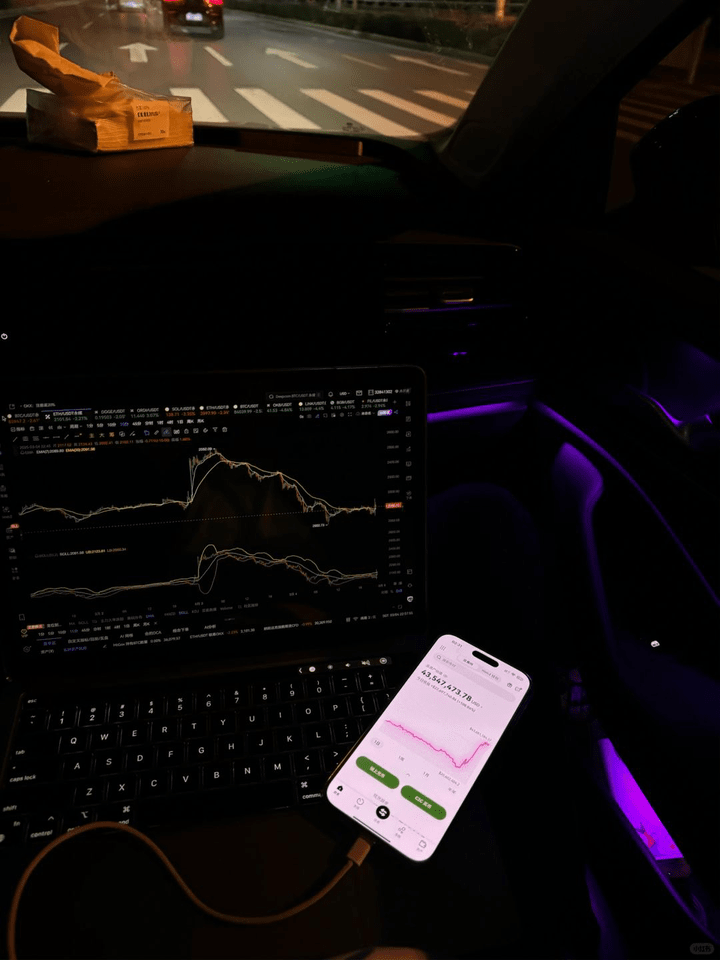
Let’s look at a story: Always earn profits that you can see, do not chase after profits that you wish for.
One day, the ancient Greek scholar Socrates led several disciples to the edge of a wheat field. It was the harvest season, and the field was full of heavy ears of wheat. Socrates said to his disciples, "Go pick the biggest ear of wheat from the field. You can only go in, not come back. I will wait for you at the end of the field."
Once the disciples understood the teacher's requirements, they gradually walked into the wheat field.
The field is full of big ears of wheat; which one is the biggest? The disciples kept their heads down and walked forward. They looked at this stalk and shook their heads; they looked at that stalk and shook their heads again. They always thought the biggest ear of wheat was still ahead. Although the disciples tried to pick a few ears, they were not satisfied and casually threw them away. They always believed there were many opportunities and had no need to decide too early.
The disciples walked forward with their heads down, carefully picking and choosing, for a long time.
Suddenly, everyone heard Socrates’ aged voice, resonant like a bell: "You have reached the end." At that moment, the disciples, empty-handed, finally woke up from their dream.
Socrates told his disciples: “There must be one ear of wheat in this field that is the biggest, but you may not encounter it; even if you do, you may not make an accurate judgment. Therefore, the biggest ear is the one you just picked.”

Socrates’ disciples realized from their teacher's words that a person's life is like walking through a wheat field, searching for the biggest ear of wheat. Some see the plump 'ear of wheat' and pick it without hesitation; others look around and repeatedly miss good opportunities. Of course, the pursuit should be for the biggest one, as holding the ear of wheat in hand is what truly matters.
As a mature investor, you must have a mature mindset. Always remember: the ear of wheat in your hand is the biggest. Be grounded and do not aim too high; only earn the profits that belong to you.

How to use 15 minutes to earn a lifetime of wealth!
As the saying goes: 'There are no constant methods in warfare, and water has no constant shape.' This statement is also very applicable to a market as fierce as a battlefield. The stock market is generally divided into bull markets, bear markets, and sideways consolidations (commonly known as choppy markets).
Different operating environments correspond to different operating methods. Just like traditional Chinese medicine, the first step is to understand the nature of the symptoms; different symptoms have different reactions. Once the severity is clear, only then can we prescribe the right medicine.
Many ordinary investors enter the stock market with a blind mindset. They always use the same method for various types of markets. (Many people don’t even have a method, just gamble based on feelings.) The results of such trading are predictable.
So how can one excel in cryptocurrency trading? Once a person enters the financial market, it is hard to turn back. If you are currently losing but still feeling lost, and plan to treat cryptocurrency trading as a second career, you must understand the '15-Minute K-Line Strategy.' Understanding it deeply will help you avoid many detours, as these are all firsthand experiences and feelings. I suggest saving this and pondering it repeatedly.
Here, I will introduce a short-term method for when the market is unstable - the 15-Minute K-Line Strategy!
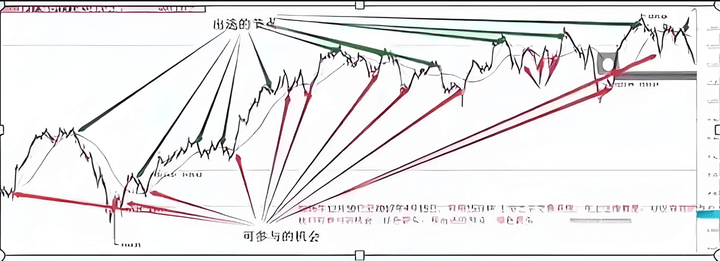
Oscillation Combat Method - 15-Minute K-Line Combat Method
In an unstable market, it is inappropriate to use daily K-lines as reference for stock trading. We must choose an appropriate minute K-line chart based on our own situation. If you can watch and trade during market hours, you can choose the 15-Minute K-Line Chart for trading. If you are a working professional, it is recommended to use the 30-Minute or 60-Minute K-Line Chart for trading! The specific trading methods are consistent with those of the 15-Minute Chart. Below, I will explain using the 15-Minute K-Line Chart.
One, 15-Minute K-Line Strategy
The 15-Minute K-Line strategy is essentially based on the 15-Minute K-Line chart of individual stocks for trading. It is a smaller version of daily operations, being a short-term trading strategy. The same method expanded to the daily line is also an effective trading method.
The purpose of the 15-Minute K-Line strategy: This method is not about making big profits through trading. Its role is to deepen your familiarity with stocks you are acquainted with in a volatile environment. By trading in small waves, you can firmly hold the stock and earn small price differences, thus reducing the costs incurred from holding the stock long-term.
Two, Specific Methods of the 15-Minute K-Line Strategy:
1. Moving Average Settings, 3 Lines: 5 Moving Average, 20 Moving Average, 60 Moving Average.
2, 5 and 20 Moving Average Usage (Ultra Short-Term):
A. When you see the 5-Day Line crossing above the 20-Day Moving Average, that is a buy signal.
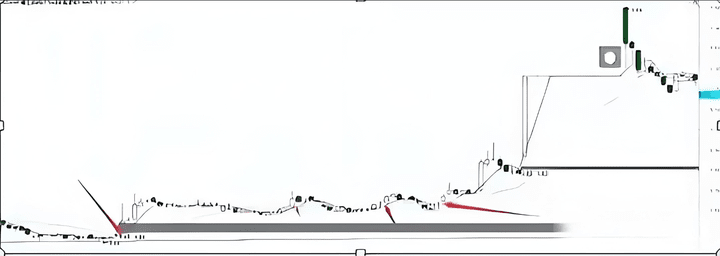
B. There are two selling methods:
① When the 5-Day Moving Average crosses below the 20-Day Moving Average, you must firmly exit the market.
② In special circumstances, if the J value of the daily KDJ for that stock reaches 100, you should consider selling when the stock price is below the 5-Day Moving Average.
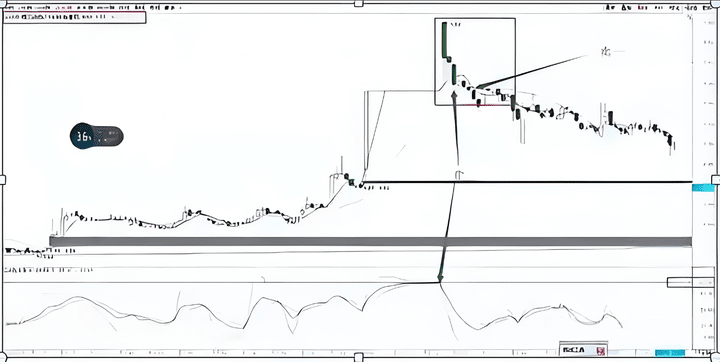
Three, Key Points of the 15-Minute K-Line Chart Strategy
1) Generally, the probability of buying and then needing to sell within the same trading day is low. However, if it does happen, you must decisively stop loss and exit the market the next day.
2) Only a small portion of total capital should be used for trading, preferably below 1/3.
3) More suitable for unstable market conditions (do not recommend high selling and low buying in bull markets; focus more on charts above 60 minutes).
4) Generally used to trade stocks you are familiar with and have been doing for a long time, or occasionally used for seizing some strong stocks.
When trading stocks you excel in, the same requirement applies: even if the current buy signal shows a price higher than when you plan to sell, you must buy. Otherwise, it will be easy to miss the stock.
5) This method has strict requirements for trading discipline; do not violate your own rules. Otherwise, the consequences could be severe.
Four, The 15-Minute K-Line Strategy combined with the Hand of God (60-Day Lifeline) Combination Strategy
Shanghai Composite Index 15-Minute K-Line Chart, 60-Day Lifeline in the 15-Minute K-Line Chart (commonly known as the Hand of God).
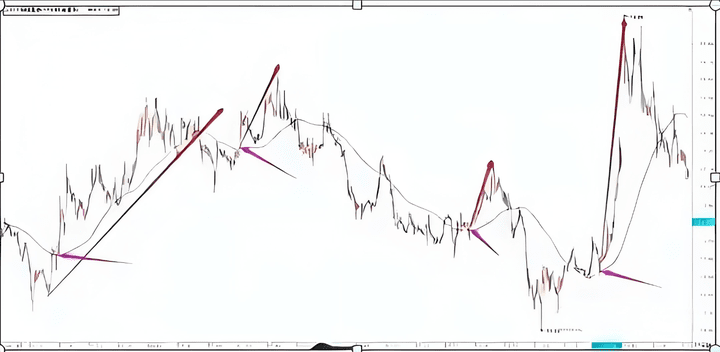
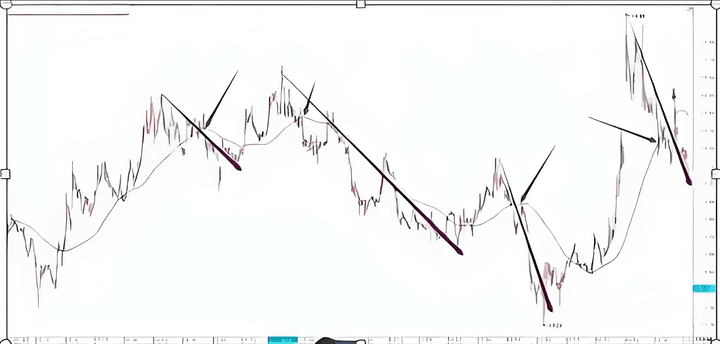
The 'Hand of God' is often used for market analysis and for high selling and low buying operations in volatile stocks.
In the 15-Minute K-Line Chart, the success rate of validation through three years of practical experience is around 80% (combining 1-Minute, 5-Minute, 30-Minute, and 60-Minute charts for better analysis). The following are the strategies for trading during upward and downward trends in the 15-Minute K-Line Chart.
1. In the 15-Minute K-Line Chart, when the stock price crosses above the 60-Day Lifeline in the 15-Minute MA and is accompanied by significant and sustained volume increase, it is a good opportunity to buy low (Keywords: cross above, significant volume, sustained volume).
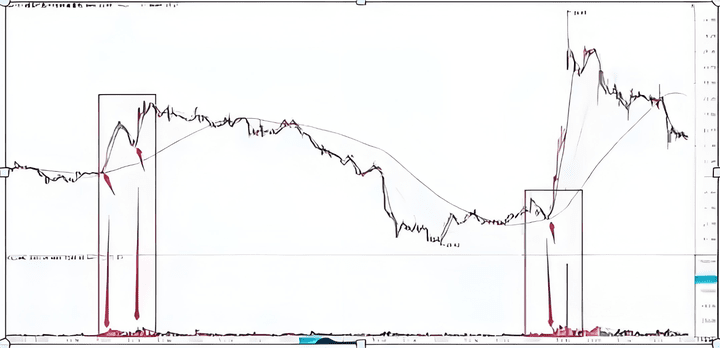
2, In the 15-Minute K-Line Chart, when the stock price falls below the 60-Day Lifeline in the 15-Minute MA and is accompanied by significant and sustained volume increase, it is the last good opportunity to sell high (Keywords: fall below, significant volume, sustained volume).
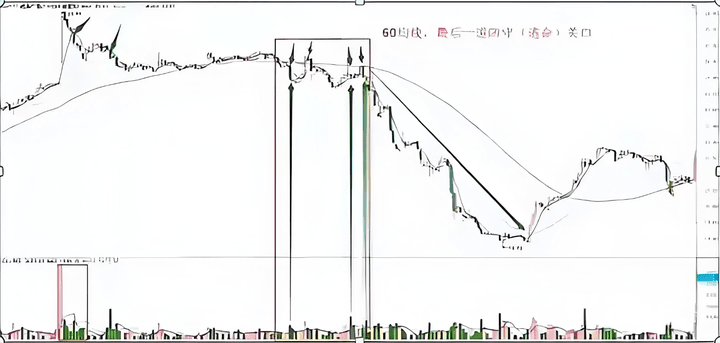
Five, Two Main Trading Strategies for the 15-Minute Operation
One, 15-Minute Extreme Reversal Channel Trading
The Extreme Reversal Channel is a tool that integrates trend analysis and price space support and resistance judgments. The usage method of this tool is the same as that of the daily line, where the lifeline serves as the boundary line between strength and weakness. Above the line is strong, below the line is weak. The two corresponding red and blue lines indicate the respective selling and buying positions. After supporting a position, aim higher. If the support breaks down or resistance cannot be overcome, expect a pullback. It is very useful for short-term price difference operations. Due to its relative simplicity, I won't elaborate too much; those who want to understand more can follow the Extreme Reversal Channel section.
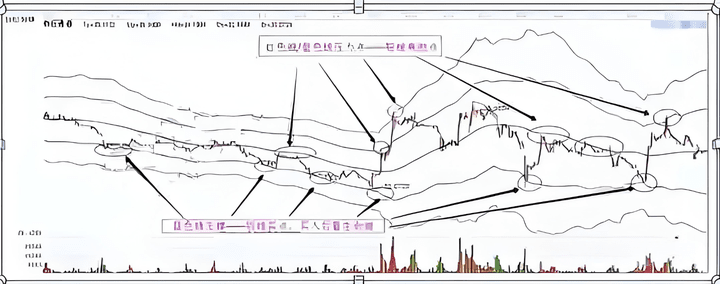
Two, Moving Average System Trading
1. Moving Average Settings: 5-Day Line, 20-Day Line, 60-Day Line;
2. Usage Methods of the 5-Day Line and 20-Day Moving Average:
When the 5-Day Line crosses above the 20-Day Line, forming a golden cross, it is a signal to buy.
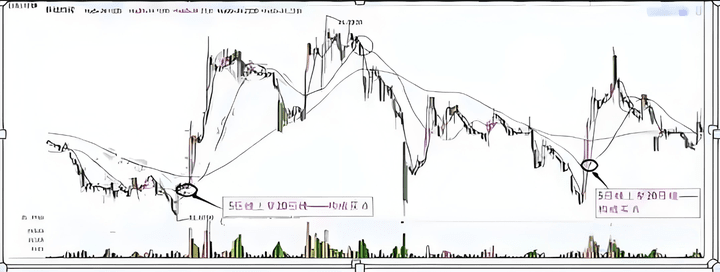
Similarly, when the 5-Day Line crosses below the 20-Day Line, forming a death cross, short positions must be firmly sold. From the above chart, it can also be seen that if you cannot sell in time, the price difference will be greatly reduced.
3. 60-Day Line - The Boundary Between Strength and Weakness
In the 15-Minute K-Line Strategy, retaining the 60-Day Line is for better judgment of market trends. It is generally believed that above the 60-Day Line is a strong buying area, while below is a weak selling area. For our operations, when the stock price crosses above the 60-Day Line and is accompanied by increasing trading volume, the 60-Day Line becomes a buying point in the later stage. If it breaks out and then retraces back to the 60-Day Line without breaking it, that is the best entry point. Similarly, if the stock price falls below the 60-Day Line and is accompanied by increasing trading volume, the 60-Day Line becomes a selling point, and you should continue to sell when it rebounds.

As mentioned above, the 15-Minute K-Line strategy is intended for short-term trading, but it is often used for intraday price difference operations due to its shorter cycle and faster fluctuations. After buying at key positions within the day, one needs to consider the position for selling. If after buying, the market diverges from the expected trend, the price difference capital should be withdrawn from the market promptly. Additionally, during trading, the price difference capital should not be too much, ideally kept within 30%, and such price differences are best used for familiar stocks that have been tracked for a long time. The success rate of price differences will be higher when you understand the stock’s nature well. The core of price differences is high selling and low buying; if the trend is established, one should follow the trend and buy and sell in a timely manner.
After seriously studying the 15-Minute K-Line strategy, it will provide good guidance for intraday price difference trading, especially for those who have time to watch the market for a long time. Correct price difference trading can reduce costs. However, this method requires investors to conduct long-term simulation verification; only if a high probability of success can be ensured is it appropriate for trading. Otherwise, incorrect trading will increase costs.
Attention!
1. The stage of ignorance and recklessness;
2. The Stage of Continuing Education;
3. The Stage of Exploration and Pioneering;
4. The Stage of Summarization and Formation;
5. Initial Effect Stage.
From this, I also deeply conclude that anything that is genuinely written from one’s own experience carries vitality, regardless of the beauty of the text itself. I thank the thousands of readers for their sincere messages and blessings. Therefore, I will dedicate the insights I have accumulated over the years in cryptocurrency trading to everyone. It can be said that no matter whether in a bull market or a bear market, these [11 Rules of Cryptocurrency Trading] can be helpful to you! If you can judge whether it is a bull or bear market and use it well, making 30 times your investment in a month is quite simple!
Iron Rule 1. Trend Reversal Signals: In a downward trend, continuous bullish candles exceeding three and bearish candles not exceeding three are warning signals for trend reversal.
Iron Rule 2. Oscillation Breakthrough Guide: In a volatile market, an increase in volume usually accompanies a major breakout during the later stage of price consolidation. Enter early by waiting for two bullish volumes to exceed previous bearish volumes during pullbacks.
Iron Rule 3. Holding Currency Tool: The holding strategy in a strong market is simple and straightforward; as long as the daily line does not break the rising moving average, hold firm, ignore technical indicators, and avoid being affected by the high position stagnation state.
Iron Rule 4. K-Line Combination Interpretation: A bullish candle coupled with two doji candlesticks usually indicates a continuation of the upward trend, typical of strong coins.
Iron Rule 5. Market Contrariness: The market often proves that the majority's view is incorrect; the smoke released by the main force and market tops often appear when people are in unanimous agreement.
Iron Rule 6. KDJ Indicator Signals: When encountering consecutive large bearish candles, if the KDJ's line falls below -12, it indicates that a short-term rebound is imminent. It is advisable to wait for the rebound before making a judgment.
Iron Rule 7. Characteristics of Breakout Bullish Candles; An upward breakout with a bullish candle turnover rate around 8% is a healthy attack volume; too large or too small may trigger a pullback.
Iron Rule 8. Resilient Mindset: When trading does not go smoothly, maintain calm, endure the pain of rebirth, and you will welcome the beauty of rebirth.
Iron Rule 9. Risk Control; Avoid being fully invested, leave room for error. The market carries risks; act with caution and leave yourself space for corrections.
Iron Rule 10. Emotional Regulation: Maintain a calm and rational attitude towards market fluctuations to avoid emotional impacts on decision-making.
Iron Rule 11. Learning and Communication: Do not isolate yourself; communicate and share with others. Even if opinions are wrong, it is still part of growth and progress together.
The above 11 points are all verified by my real money in the market; you must review them repeatedly to deepen your impression. I believe your trading skills will improve dramatically!
A famous trader on Wall Street once said: "Making money in the market is quick, but losing money is also quick, and most of the time, losses happen after I feel self-satisfied from making money."
Trading cryptocurrencies is a process of self-cultivation. Everyone has their own path to walk. Whether you choose the right path or the wrong path, whether you walk straight or take detours, ultimately, it is still up to you. However, no matter what, as long as you are willing to persist, while periodically reflecting on the paths you have walked, you will continuously improve yourself. Of course, a better method is to learn from the experiences and lessons of others, constantly correcting your posture as you walk. You will reach the shores of success more quickly!
"A wave high on a calm surface warns of great waves to come" reminds us to stay vigilant and not be misled by surface calm, to keenly perceive potential risks in the cryptocurrency market. Entering the market carries risks; trading requires caution. Do not be envious of others making money, and do not blindly follow others’ advice. You must be responsible for your own money. Investing is like planting a tree; it takes time and patience. If done well, the fruits will be plentiful; if done poorly, you may lose everything.
No matter how diligent the fisherman, he will not go out to sea during the stormy season but will carefully protect his boat. This season will pass, and sunny days will eventually come! Follow me, and I will teach you both how to fish and how to handle the fishery. The door to the cryptocurrency world is always open; only by following the trend can you have a life that flows with the current. Save this and keep it in mind!